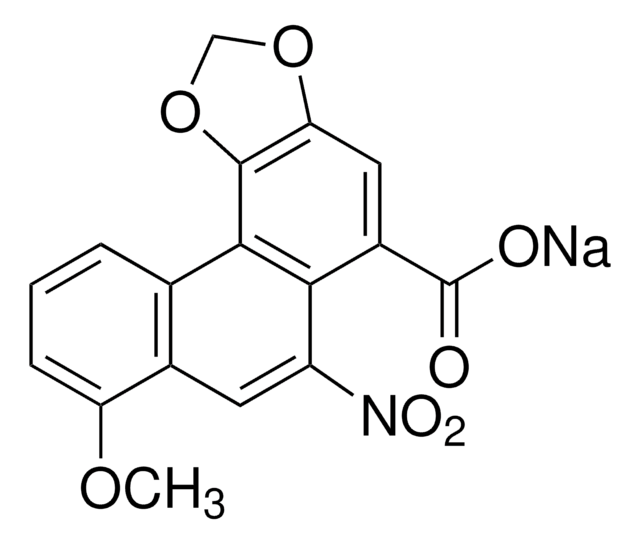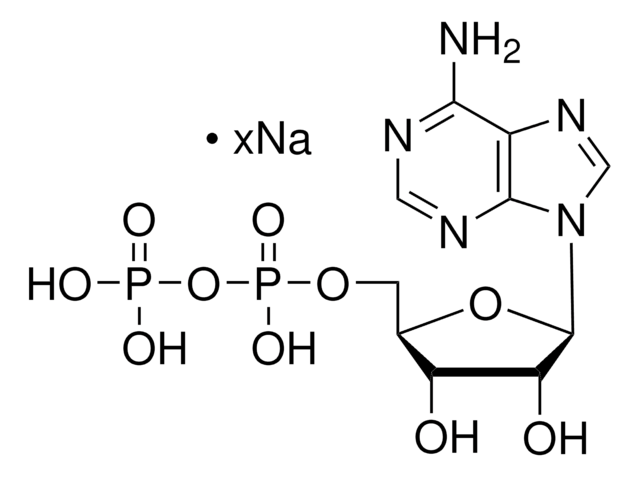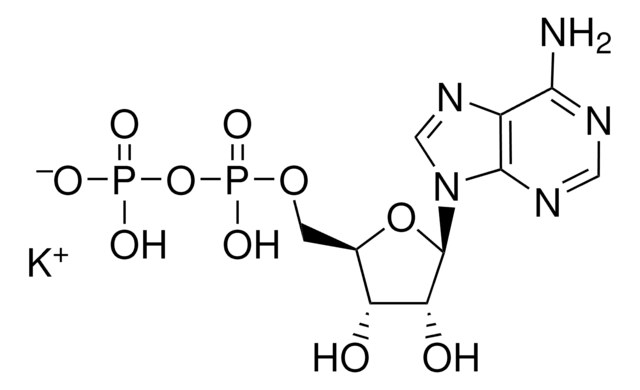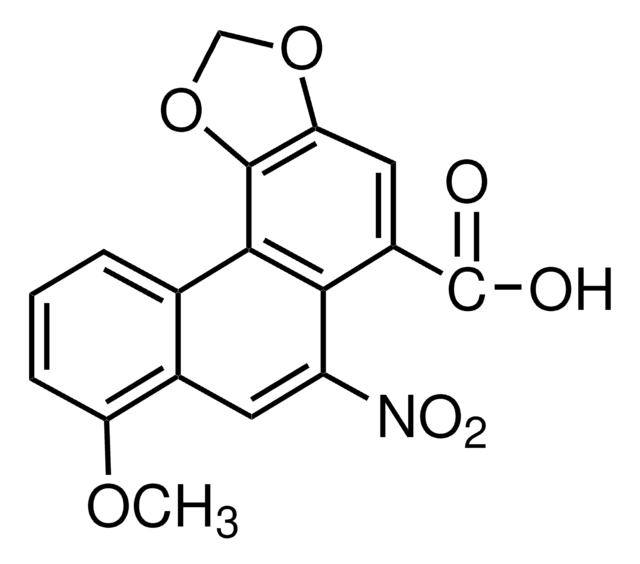추천 제품
product name
Aristolochic acid I, powder
분석
≥90% (HPLC)
형태
powder
색상
yellow
mp
269-270 °C
solubility
DMSO: soluble
ethanol: soluble
저장 온도
2-8°C
SMILES string
COc1cccc2c1cc([N+]([O-])=O)c3c(cc4OCOc4c23)C(O)=O
InChI
1S/C17H11NO7/c1-23-12-4-2-3-8-9(12)5-11(18(21)22)14-10(17(19)20)6-13-16(15(8)14)25-7-24-13/h2-6H,7H2,1H3,(H,19,20)
InChI key
BBFQZRXNYIEMAW-UHFFFAOYSA-N
유사한 제품을 찾으십니까? 방문 제품 비교 안내
일반 설명
애플리케이션
- as a standard for the analysis of Aristolochia sprucei crude extract by high-performance liquid chromatography
- to study its effects on histone deacetylase 3 (HDAC3) aberration and renal fibrosis
- to induce acute aristolochic acid nephropathy and to study its impact on miRNA and mRNA expression in mice
생화학적/생리학적 작용
신호어
Danger
유해 및 위험 성명서
Hazard Classifications
Acute Tox. 3 Oral - Carc. 1A - Muta. 1B
Storage Class Code
6.1C - Combustible acute toxic Cat.3 / toxic compounds or compounds which causing chronic effects
WGK
WGK 3
Flash Point (°F)
Not applicable
Flash Point (°C)
Not applicable
개인 보호 장비
Eyeshields, Faceshields, Gloves, type P2 (EN 143) respirator cartridges
시험 성적서(COA)
제품의 로트/배치 번호를 입력하여 시험 성적서(COA)을 검색하십시오. 로트 및 배치 번호는 제품 라벨에 있는 ‘로트’ 또는 ‘배치’라는 용어 뒤에서 찾을 수 있습니다.
관련 콘텐츠
Discover Bioactive Small Molecules for Lipid Signaling Research
자사의 과학자팀은 생명 과학, 재료 과학, 화학 합성, 크로마토그래피, 분석 및 기타 많은 영역을 포함한 모든 과학 분야에 경험이 있습니다..
고객지원팀으로 연락바랍니다.






